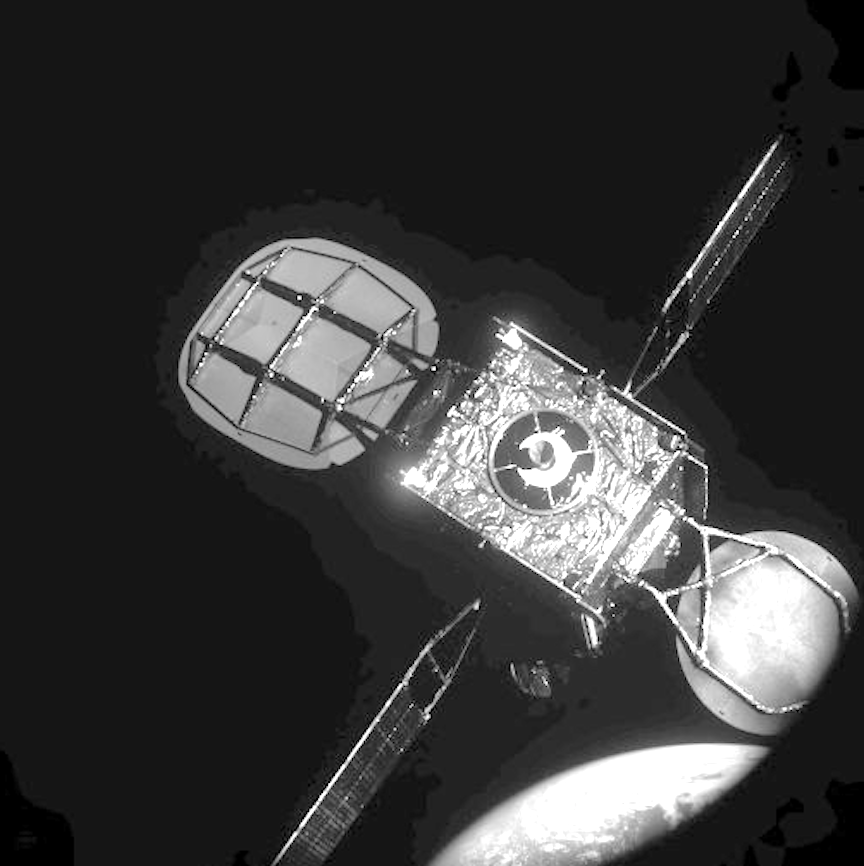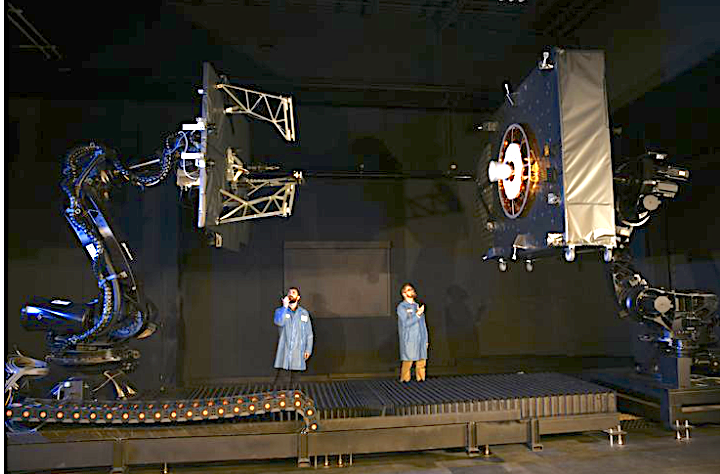
View of IS-901 satellite from Mission Extension Vehicle-1’s (MEV-1) “near hold” position during approach from approximately 20 meters with Earth in the background. The MEV successfully docked with the Intelsat 901 satellite on Tuesday, February 25.

Northrop Grumman Corporation (NYSE: NOC) and the company’s wholly-owned subsidiary, SpaceLogistics LLC, are celebrating an historic first. They have photos of the first docking of the Mission Extension Vehicle-1 (MEV-1) to the Intelsat 901 (IS-901) spacecraft in order to provide life-extension services. This historic accomplishment marks the first time two commercial satellites have docked in orbit and the first time that mission extension services will be offered to a satellite in geosynchronous orbit. IS-901 is a fully operational communication satellite that is running low on fuel.
The MEV-1 was launched October 9, 2019 and recently completed its orbit raising it to an orbit approximately 180 miles above geosynchronous orbit. Intelsat (NYSE: I) removed 901 from service in December 2019, transferring customers to other satellites in its extensive fleet, in order to raise its orbit to the same altitude as MEV-1 in preparation for docking. MEV-1 then completed the historic docking with IS-901 on February 25 at 2:15 a.m. ET. The combined spacecraft stack will now perform on-orbit checkouts before MEV-1 begins relocating the combined vehicle to return IS-901 into service in late March.
Under the terms of the contract with Intelsat, MEV-1 will provide five years of life extension services to the IS-901 satellite before returning the spacecraft to a final decommissioning orbit. MEV-1 will then move on to provide mission extension services to a new client spacecraft.
Tom Wilson, president, SpaceLogistics LLC stated that the Mission Extension Vehicle provides an innovative, satellite life extension service. Together, Northrop Grumman, SpaceLogistics LLC and Intelsat have taken the first step in pioneering in-space logistics services for both commercial and government customers.

MEV docking approach.
Mike DeMarco, executive vice president and chief services officer at Intelsat added that Intelsat has been at the forefront of innovation and game-changing space technology for decades. Pushing the boundaries of what’s possible is in their DNA here – that’s why they didn’t hesitate to sign up to be MEV-1’s first customer. They’re proud to make history with SpaceLogistics LLC and Northrop Grumman on this groundbreaking space milestone.
MEV-1 was designed and built at the Northrop Grumman’s Dulles, Virginia, facility and uses a low-risk mechanical docking system that attaches to existing features on the client satellite. Once docked, MEV takes over the attitude and orbit maintenance of the combined vehicle stack to meet the pointing and station keeping requirements of the customer. MEV is designed for multiple docking and undockings and can deliver over 15 years of life extension services. The company is scheduled to launch its second Mission Extension Vehicle, MEV-2, later this year, which is contracted to provide service to a different Intelsat satellite.
This life extension service is just the first step in an expansive technology development plan. The company’s vision is to establish a fleet of satellite servicing vehicles that not only extend the life of satellites, but provide other services such as inclination changes and spacecraft inspections, as well as use advanced robotics technology to perform additional functions such as in-orbit repair and assembly.

